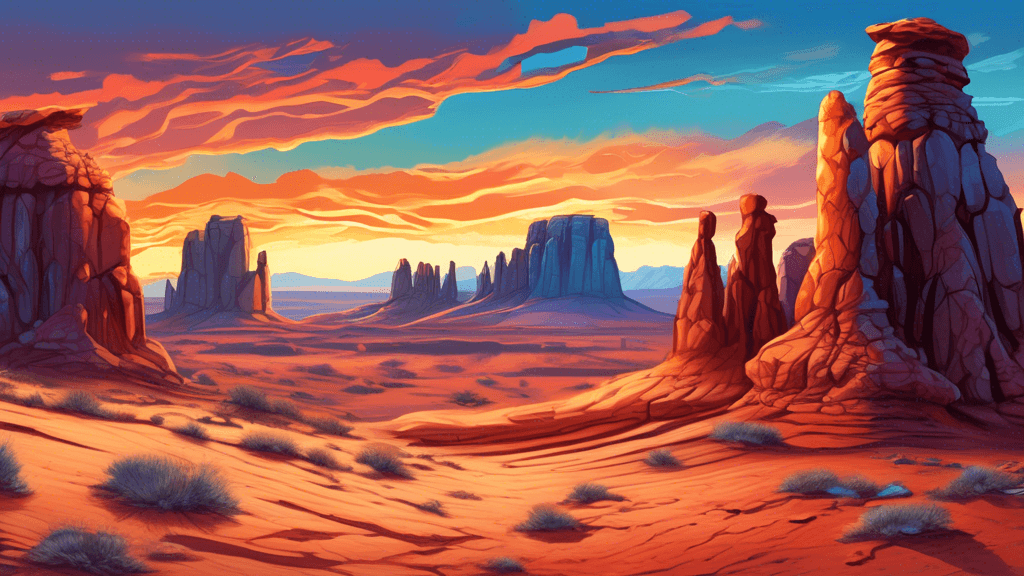
Exploring Rock Formations: The Natural Art of Stone in Landscapes
Share
The Natural Art of Stone in Landscapes
When we discuss the beauty of the natural world, often lush green forests, sprawling blue oceans, and vast fiery deserts capture our imaginations. However, the stoic beauty of rock formations is an equally mesmerizing aspect of nature’s artistry. What is it about these rocky structures that not only appeal to our aesthetic senses but also invite us to delve deeper into their geological and cultural significances?
Understanding Rock Formations: An Overview
Rock formations are naturally occurring groups of rocks that have formed in distinct shapes due to various geological processes over millions of years. These formations can be as grand as a towering cliff face or as humble as boulder groups strewn across a landscape. The process of their formation is a narrative of the Earth’s historical drama, involving volcanic activity, erosion, sedimentation, and weathering.
Why do these geological features fascinate scientists and artists alike? Let's explore their dual appeal through both scientific and artistic lenses.
The Science Behind the Stones
Geologically, rock formations are archives of the Earth’s past. Consider these key points:
- Erosion and Weathering: These processes sculpt and shape rocks into fascinating formations, revealing layers and colors that tell stories of historical climates and landscapes.
- Sedimentary Tales: Layers in sedimentary rocks can give us clear records of past life on Earth, including fossils of plants and animals that no longer exist.
- Metamorphic Mysteries: Conditions of extreme heat and pressure transform rocks, creating new, denser formations that can provide clues about the geological events of Earth’s inner layers.
Through these processes, each rock formation becomes a unique piece of Earth’s timeline, inviting scientists to decode its ancient secrets. Dr. Emily Carter, a renowned geologist, expresses it beautifully: Each formation holds a tale waiting to be told. Studying them is like being a detective in nature’s ancient labyrinth, piecing together the environmental and climatic shifts that shaped our world.
Rock Formations as Artistic Inspirations
From the haunting beauty of Ireland's Giant's Causeway to the majestic grandeur of the Grand Canyon, rock formations have long captivated artists and photographers. But what specifically about these structures makes them so dynamically captivating to the creative eye?
Texture and Color: The array of textures found in rock formations—from smooth, wave-like ripples to sharp, jagged edges—offers a tactile diversity that can provoke deep emotional responses. The palette of colors, from earthy browns to vibrant reds, enhances this visual drama.
Scale and Form: The immense scale of many rock formations juxtaposed with the human scale creates a visual impact that can evoke feelings of awe and insignificance. The unusual, often bizarre forms challenge our perceptions of natural beauty and inspire new artistic interpretations.
Noted landscape photographer Laura Green once said, Capturing rock formations is like sculpting with light. Each angle tells a different story, and the interplay of shadow and light can dramatically alter the mood and message of the image.
The Role of Rock Formations in Environmental Conservation
Beyond their scientific and artistic value, rock formations are vital to environmental conservation. They provide habitats for various species and help in biodiversity conservation. Protecting these natural monuments is crucial for sustaining ecological balance and maintaining the integrity of our natural heritage.
As habitats, they can be particularly unique, often creating microenvironments that support species not found anywhere else. Their conservation ensures the survival of these species and maintains the natural processes that rock formations themselves govern.
Conclusion and Call to Action
The stoic, silent rock formations that dot our planet are more than just scenic. They are storytellers and teachers, artworks and habitats. As we continue to explore and learn from them, let’s also commit to their preservation. Join or support local and global conservation efforts focused on landscapes and geological formations. Remember, by protecting them, we not only preserve the past but also secure a future for the next generations to learn, admire, and be inspired. The time to act is now—will you join in the preservation of our planet’s monumental natural art?
Indeed, rock formations are the very epitome of beauty frozen in time. Each stone, each formation is a verse in the grand poetic narrative of our planet. Let's cherish and protect these irreplaceable masterpieces.





